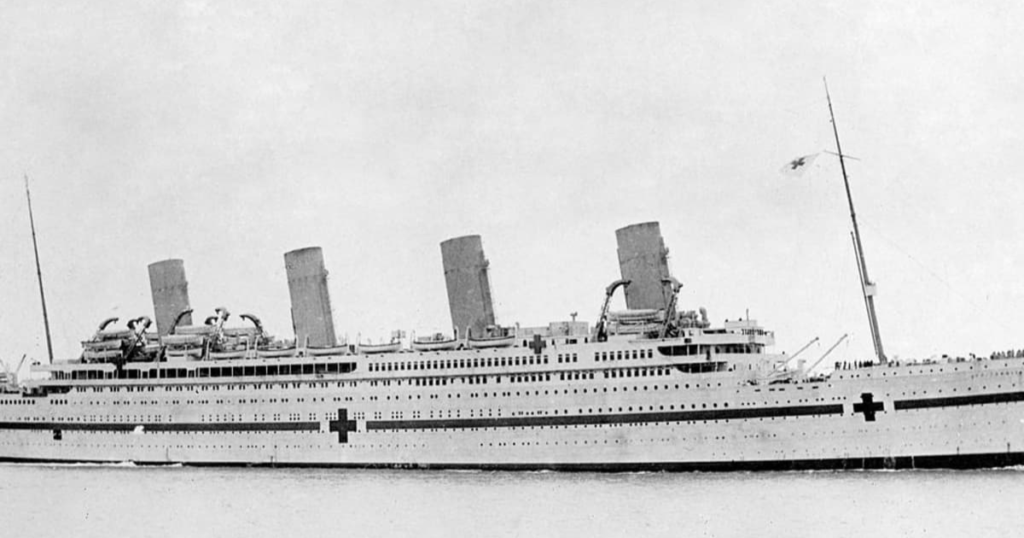Introduction
The sinking of the Titanic in 1912 remains one of the most well-known maritime disasters in history. However, fewer people are aware of its sister ship, the Britannic, which also met a tragic fate. The Britannic was designed to be the safest of the three Olympic-class liners built by the White Star Line, yet it never completed a single passenger voyage. This article explores the story of the Britannic, from its inception to its ill-fated end, and why it is often overshadowed by its famous predecessor.
The Creation of the Britannic
Following the Titanic disaster, White Star Line and shipbuilders Harland & Wolff made significant design modifications to their third Olympic-class liner. Originally intended to be named Gigantic, the ship was later renamed Britannic, a decision likely influenced by the Titanic’s tragic loss. Construction began in 1911, and after the Titanic’s sinking in 1912, major safety upgrades were implemented:
- Enhanced Watertight Compartments: Bulkheads were extended higher to prevent flooding from spreading.
- Double Hull Reinforcements: Additional hull plating was added to protect against icebergs or collisions.
- More Lifeboats: Unlike the Titanic, which lacked sufficient lifeboats, the Britannic had enough for all passengers and crew.
Despite these improvements, the Britannic never got the chance to prove its capabilities as a passenger liner.
Britannic’s Role in World War I
Before Britannic could set sail as a luxury liner, World War I broke out in 1914. The British government requisitioned the ship as a hospital vessel to transport wounded soldiers from the front lines to safer locations. Repainted in a white and green color scheme with red crosses, the Britannic was converted into His Majesty’s Hospital Ship (HMHS) Britannic and began operations in 1915.
During this time, Britannic completed several successful medical missions, ferrying injured soldiers from the Mediterranean to the United Kingdom. However, its service was short-lived.

The Tragic Sinking of the Britannic
On November 21, 1916, while navigating the Aegean Sea near Greece, Britannic struck a naval mine allegedly laid by German forces. The explosion caused severe damage to the forward compartments and boiler rooms, leading to rapid flooding. Despite the safety modifications made post-Titanic, Britannic sank in just 55 minutes, much faster than Titanic’s 2 hours and 40 minutes.
Fortunately, due to wartime precautions and increased lifeboat availability, the death toll was significantly lower than Titanic’s. Out of approximately 1,065 people onboard, only 30 perished, mainly due to lifeboats being launched too soon and sucked into the ship’s propellers.
Why Britannic is Less Famous than Titanic
Several factors contribute to Britannic’s relative obscurity:
- No Passenger Voyages: Unlike Titanic, which was on its maiden passenger journey, Britannic never carried paying travelers.
- Lower Casualties: The death toll of 30, while tragic, was far less than the 1,500+ lives lost on the Titanic.
- Wartime Context: The world was focused on the war, making the Britannic sinking less shocking compared to the Titanic’s dramatic civilian disaster.
- No Mystery: Unlike Titanic, which sank due to a long-debated iceberg collision, Britannic’s cause was clear: a wartime naval mine.
The Wreck and Its Legacy
Discovered in 1975 by explorer Jacques Cousteau, Britannic’s wreck rests at 400 feet (122 meters) below the Aegean Sea. Unlike Titanic, which split in two, Britannic is remarkably well-preserved due to its shallower depth and slower rate of deterioration.
Today, Britannic remains an important underwater site for maritime archaeologists and divers. While it never had the same impact as Titanic in popular culture, it stands as a testament to the evolution of ship safety and the unpredictable nature of the sea.
Conclusion
Although overshadowed by its legendary sister, the story of Britannic remains a fascinating chapter in maritime history. Designed to be unsinkable, modified for safety, and yet lost to the ocean within an hour, Britannic proves that even the most advanced ships of the time were vulnerable to the perils of war and nature. Its story serves as a reminder of both human ingenuity and the unpredictability of the deep sea.


